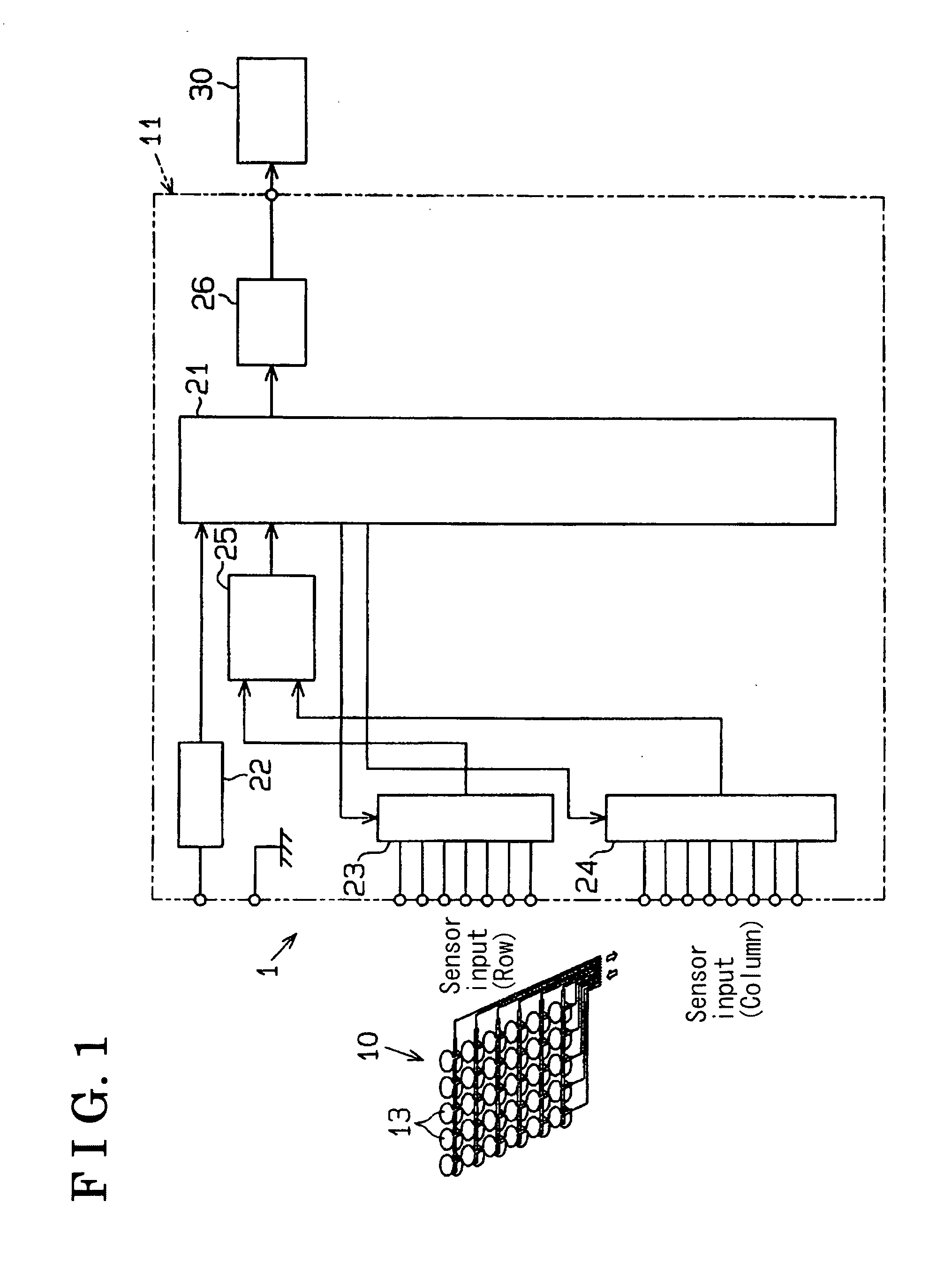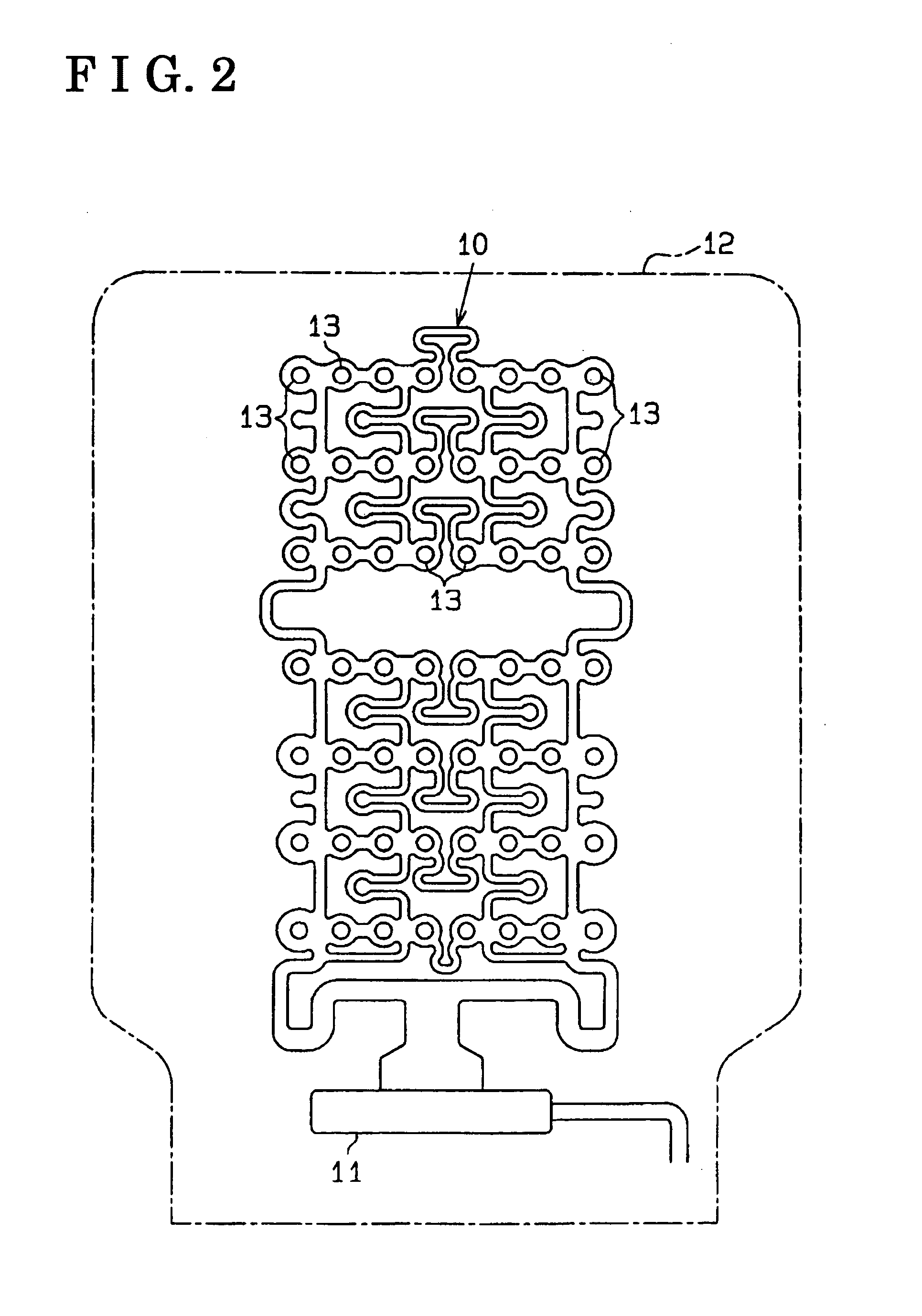Seating detector
a technology of eating detector and detector body, which is applied in the direction of instruments, pedestrian/occupant safety arrangements, and tractors, etc., can solve the problems of occupant misclassification and decrease in detection accuracy
- Summary
- Abstract
- Description
- Claims
- Application Information
AI Technical Summary
Benefits of technology
Problems solved by technology
Method used
Image
Examples
Embodiment Construction
[0029] An embodiment of the present invention will be explained hereinbelow referring to attached drawings FIG. 1 through FIG. 13.
[0030]FIG. 1 illustrates a block diagram indicating an electric configuration of the seating detector 1 mounted to a vehicle, and FIG. 2 illustrates a flat view of the configuration of the seating detector 1. As shown in FIG. 2, the seating detector 1 includes a plurality of pressure sensors 10 and a controller 11.
[0031] As shown in FIG. 2, the pressure sensors 10 provided on the seating surface of the vehicle seat 12 (seat cushion) includes cells 13 (load sensors) for detecting the pressure applied to the seating surface of the seat. Position of each cells 13 are defined by a matrix structure, specifically a two-dimensional array of rows in a width direction of the vehicle seat (i) and columns in a longitudinal direction of the vehicle seat (j). Each cell 13 provided at a certain position defined by such matrix structure detects a pressure (a partial p...
PUM
 Login to View More
Login to View More Abstract
Description
Claims
Application Information
 Login to View More
Login to View More - R&D
- Intellectual Property
- Life Sciences
- Materials
- Tech Scout
- Unparalleled Data Quality
- Higher Quality Content
- 60% Fewer Hallucinations
Browse by: Latest US Patents, China's latest patents, Technical Efficacy Thesaurus, Application Domain, Technology Topic, Popular Technical Reports.
© 2025 PatSnap. All rights reserved.Legal|Privacy policy|Modern Slavery Act Transparency Statement|Sitemap|About US| Contact US: help@patsnap.com



